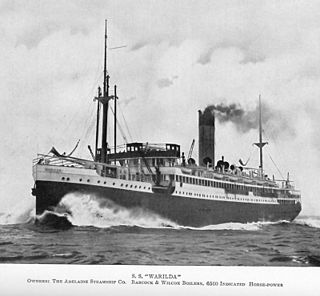
Charles Yelverton O'Connor,, was an Irish engineer who is best known for his work in Western Australia, especially the construction of Fremantle Harbour, thought to be impossible, and the Goldfields Water Supply Scheme.

Wallace Alexander Bickley was an early settler in the Swan River Colony of Western Australia, who became a Member of the Western Australian Legislative Council.
Western Australian Government Railways (WAGR) was the operator of railway services in the state of Western Australia between October 1890 and June 2003. Owned by the state government, it was renamed a number of times to reflect extra responsibility for tram and ferry operations that it assumed and later relinquished. Its freight operations were privatised in December 2000 with the remaining passenger operations transferred to the Public Transport Authority in July 2003.

Bickley is a suburb located within the City of Kalamunda, in Perth, Western Australia.
The Melbourne and Metropolitan Board of Works (MMBW) was a public utility board in Melbourne, Australia, set up in 1891 to provide water supply, sewerage and sewage treatment functions for the city. In 1992, the MMBW was merged with a number of smaller urban water authorities to form Melbourne Water. MMBW was abolished in 1992.

HMAT Warilda was a 7713-ton vessel, built by William Beardmore and Company in Glasgow as the SS Warilda for the Adelaide Steamship Company. She was designed for the East-West Australian coastal service, but following the start of the First World War, she was converted into a troopship and later, in 1916, she was converted into a hospital ship.
Bickley Pumpback Dam, known also as the Lower Bickley Brook reservoir is located in Perth, Western Australia.
John F. Gavin, born as John Francis Henry Gavin was an Australian film director, who was one of the early filmmakers of the 1910s. He is best known for making films about bushrangers such as Captain Thunderbolt, Captain Moonlite, Ben Hall and Frank Gardiner. He was known by the nickname "Jack" and worked in collaboration with his wife Agnes, who wrote many of his films, most of which have not survived.

James Gardiner was an Australian politician who served in the Legislative Assembly of Western Australia from 1901 to 1904 and from 1914 to 1921. He served as colonial treasurer under two premiers, Walter James and Henry Lefroy. Gardiner was also the inaugural state leader of the Country Party from 1914 to 1915, and briefly served as Speaker of the Legislative Assembly from March to June 1917.

Sir Russell John Dumas KBE, CMG was a public servant and engineer who led several large works projects in Western Australia.

Henry John Saunders was an English-born Australian politician.

Captain Sydney Dalrymple, was an Australian First World War flying ace, credited with five aerial victories while serving in the British Royal Flying Corps and Royal Air Force.

The O'Shannassy Reservoir is an Australian man-made water supply dammed reservoir. The 3.1-gigalitre water store across the O'Shannassy River is located near the locality of McMahons Creek, approximately 80 kilometres (50 mi) east of Melbourne, Victoria. The dam that creates the impoundment is called the O'Shannassy Dam.

Nookawarra Station is a pastoral lease and sheep station located in the Mid West region of Western Australia. The station occupies an area of approximately 604,000 acres (244,430 ha).

Byro Station is a pastoral lease and sheep station that also carries cattle, located in the Mid West region of Western Australia.
The Australasian Institute of Mining and Metallurgy (AusIMM) provides services to professionals engaged in all facets of the global minerals sector and is based in Carlton, Victoria, Australia.
The Australian Mining Corps was a specialist military mining unit of the Royal Australian Engineers during World War I.
For a more comprehensive treatment with full quotes of newspaper articles refer Wikibooks chapter on VIN Geraldton
Alfred Stephen Kenyon, generally known as A. S. Kenyon or Stephen Kenyon was an Australian civil engineer and polymath.
Harold Arthur Charles Daffen was an Australian politician. He was a Liberal Party of Australia member of the Western Australian Legislative Council from 1947 to 1950, representing Central Province.










